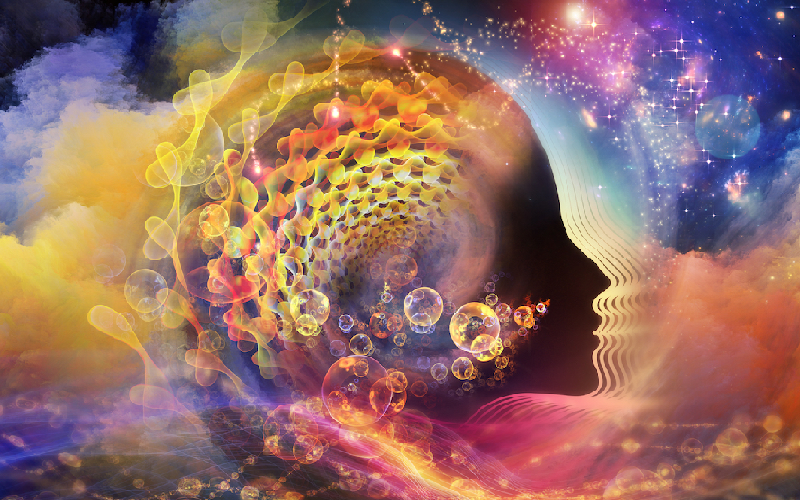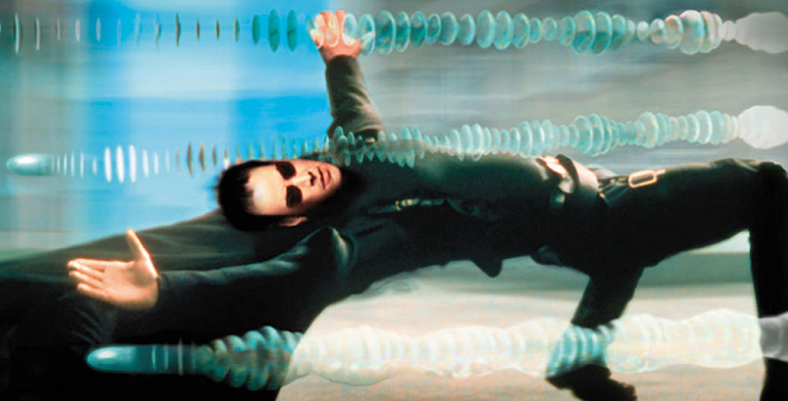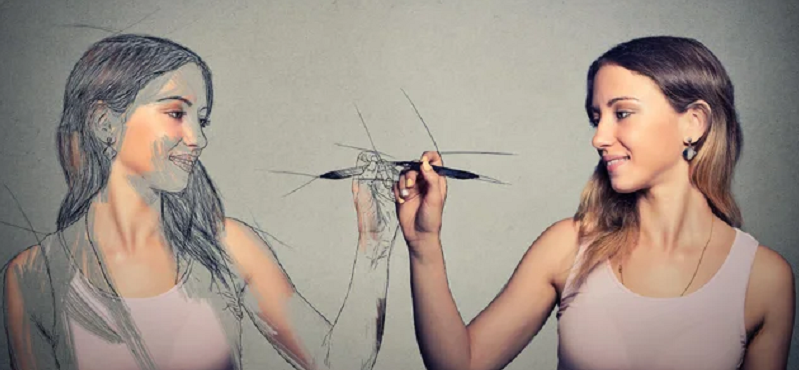
Perception is an essential aspect of our daily lives that shapes how we understand and interact with the world around us. However, what we perceive as reality may not necessarily be an accurate representation of the world. Our brains construct our reality by interpreting the information we receive from our senses and integrating it with our past experiences and knowledge.
What is Perception?
Perception is the process by which our brain interprets and organizes sensory information from the environment. It involves our ability to sense, recognize, and understand the stimuli we encounter through our senses, including sight, hearing, touch, taste, and smell.
Perception is a complex process that involves the interaction between the sensory information and our cognitive processes, including attention, memory, and reasoning.
Perception is a subjective experience that varies from person to person. Each person has their own unique way of interpreting the world based on their past experiences, expectations, and biases. Therefore, perception is not a direct representation of the world, but rather an interpretation of it.
The process of perception begins with the sensation, which is the detection of a physical stimulus by the sensory receptors located in our eyes, ears, nose, tongue, and skin. Sensation is a purely physiological process that does not involve interpretation or meaning.
For example, when light enters our eyes, it is detected by the photoreceptor cells in the retina, which sends signals to the brain. Similarly, when sound waves enter our ears, they are detected by the hair cells in the cochlea, which also sends signals to the brain.
However, perception goes beyond sensation by adding meaning and interpretation to the sensory information. Perception involves the processing of sensory information by the brain to create a mental representation of the world. This mental representation is based on our past experiences, expectations, and cultural background.

How Our Brain Constructs Reality
Our brain constructs reality by interpreting and integrating sensory information with our past experiences and knowledge. The process of constructing reality is based on our perception, which involves the integration of sensory information and cognitive processes, including attention, memory, and reasoning.
One way our brain constructs reality is through the process of selective attention. Our brain is bombarded with a vast amount of sensory information at any given time, and it is impossible to process all of this information simultaneously. Therefore, our brain selectively filters and processes the sensory information that is most relevant to us at the moment. For example, when we are walking down a busy street, we may selectively attend to the sound of our friend’s voice among the noise of the crowd.
Another way our brain constructs reality is through the process of memory. Our past experiences and knowledge shape our perception of the world by influencing our interpretation of sensory information. For example, if we have a negative past experience with a particular food, we may perceive the taste and smell of the food differently than someone who has not had that experience. Memory also plays a crucial role in our ability to recognize familiar objects and faces.
Our brain also constructs reality by using heuristics, which are mental shortcuts that help us make sense of the world quickly. Heuristics are based on our past experiences and knowledge and can lead to biases in our perception. For example, if we have a negative stereotype about a particular group of people, we may perceive their behavior differently than someone who does not have that stereotype.
The construction of reality is also influenced by the cultural and social context in which we live. Our cultural and social background shapes our perception of the world and influences how we interpret sensory information. For example, cultural differences in language and communication can influence how we perceive and interpret nonverbal cues.
Our brain constructs reality through the process of prediction. Our brain uses our past experiences and knowledge to make predictions about what will happen next. For example, when we see a car driving down the street, we predict that it will continue driving down the street and not suddenly stop. This prediction process helps us make sense of the world and prepare for what is likely to happen next.

The Science of Perception
The science of perception is a multidisciplinary field that investigates how we sense, interpret, and make sense of the world around us. Perception is a complex and dynamic process that involves the interaction between the sensory information we receive and the cognitive processes that interpret and integrate this information.
Understanding the science of perception is essential for understanding how we perceive the world and how our perception influences our behavior and decision-making.
The science of perception includes several theories and models that attempt to explain the process of perception. One of the most influential theories is the Gestalt theory, which proposes that we perceive objects and scenes as organized wholes rather than as a collection of individual parts. The Gestalt theory emphasizes the importance of perceptual organization and the role of context in shaping our perception.
Another influential theory in the science of perception is the constructivist theory, which suggests that our perception is not a direct representation of the world but rather a mental construction based on our past experiences and knowledge. The constructivist theory emphasizes the role of top-down processing, which refers to the influence of higher-level cognitive processes on our perception.
The science of perception also explores the impact of cultural, social, and environmental factors on our perception. For example, research has shown that cultural differences in language and communication can influence how we perceive and interpret sensory information. Similarly, social context can influence our perception, as demonstrated by studies on conformity and social influence.
Attention and expectation are two critical factors in the science of perception. Attention refers to our ability to selectively process and attend to specific sensory information while ignoring others. Expectation refers to our prediction of what will happen next based on our past experiences and knowledge. Both attention and expectation can influence our perception of the world.
The science of perception investigates the limitations of our perception. For example, our sensory systems have a limited range, and we cannot sense all types of stimuli. Illusions are also used to investigate the limitations of our perception, as they reveal how our perception can be influenced by contextual cues and expectations.

The Limits of Perception
The limits of perception refer to the constraints and limitations of our sensory systems that affect how we sense and interpret the world around us. Our sensory systems are not perfect and have limitations in terms of their range, sensitivity, and accuracy. Understanding the limits of perception is essential for understanding the accuracy and reliability of our perception of the world.
One of the most significant limitations of perception is the range of our sensory systems. For example, humans can only see a limited range of the electromagnetic spectrum, which is known as visible light. Similarly, our hearing is limited to a particular range of frequencies, and our sense of touch is limited to detecting certain types of stimuli. The limitations of our sensory systems mean that we cannot perceive all types of stimuli in the environment.
Another limitation of perception is the accuracy and reliability of our sensory systems. Our sensory systems can be influenced by a variety of factors, including the context in which stimuli are presented, our attention, and our expectations. For example, our perception of the size of an object can be influenced by the context in which it is presented, such as the presence of other objects. Similarly, our attention can influence our perception of sensory information, as we are more likely to notice stimuli that we are actively attending to.
The limits of perception also include illusions, which are perceptions that do not correspond to reality. Illusions are often used to study the limitations of our perception and to demonstrate how our perception can be influenced by contextual cues and expectations. For example, the Müller-Lyer illusion is a visual illusion in which two lines of equal length appear to be different lengths due to the presence of arrows at the end of the lines.
The limits of perception include individual differences in perception. Our perception of the world is subjective and can vary from person to person based on factors such as our past experiences, expectations, and cultural background. For example, research has shown that people from different cultures can perceive and interpret sensory information differently.
Applications of Understanding Perception
Understanding perception has several applications in various fields, including psychology, neuroscience, design, and marketing. Below are some examples of the applications of understanding perception:
- Decision-making and behavior: Understanding perception can help us make better decisions and understand our behavior. By understanding how our perception is influenced by contextual cues, biases, and expectations, we can make more informed decisions and avoid common errors in judgment.
- Design and marketing: Understanding perception is essential in design and marketing. By understanding how people perceive and interpret sensory information, designers and marketers can create more effective products and communication strategies. For example, designers can use color and contrast to direct attention and create a particular mood or emotion, while marketers can use language and imagery to influence consumer behavior.
- Art and aesthetics: Understanding perception is essential in the field of art and aesthetics. By understanding how people perceive and interpret visual and auditory stimuli, artists can create more impactful and meaningful works of art. For example, artists can use perspective and composition to create the illusion of depth and space, while musicians can use harmony and melody to create emotional responses in the listener.
- Education and training: Understanding perception can also have applications in education and training. By understanding how people perceive and process information, educators and trainers can create more effective learning environments and strategies. For example, educators can use visual aids and multimedia to enhance learning, while trainers can use simulations and interactive exercises to improve skill acquisition.
- Healthcare: Understanding perception can also have applications in healthcare. By understanding how perception is influenced by pain, stress, and anxiety, healthcare professionals can develop more effective treatments and interventions. For example, healthcare professionals can use relaxation techniques and cognitive-behavioral therapy to reduce stress and anxiety in patients, which can improve their perception of pain and overall well-being.
By understanding how people perceive and interpret sensory information, we can create more effective products, communication strategies, and interventions that can improve people’s lives.
